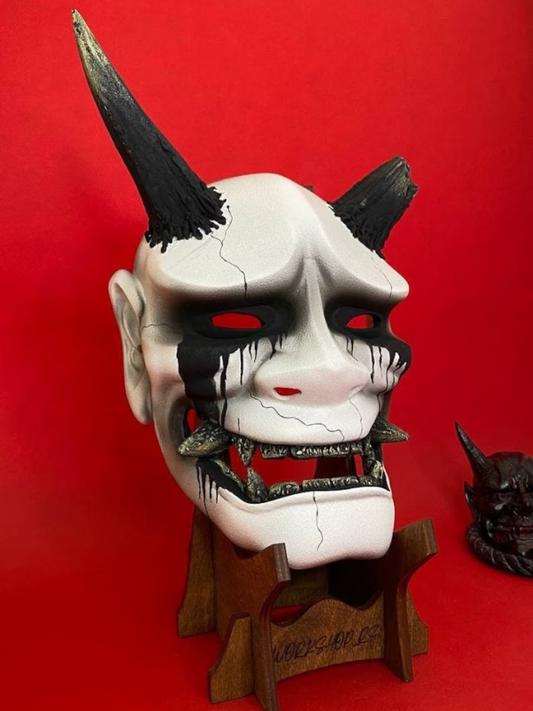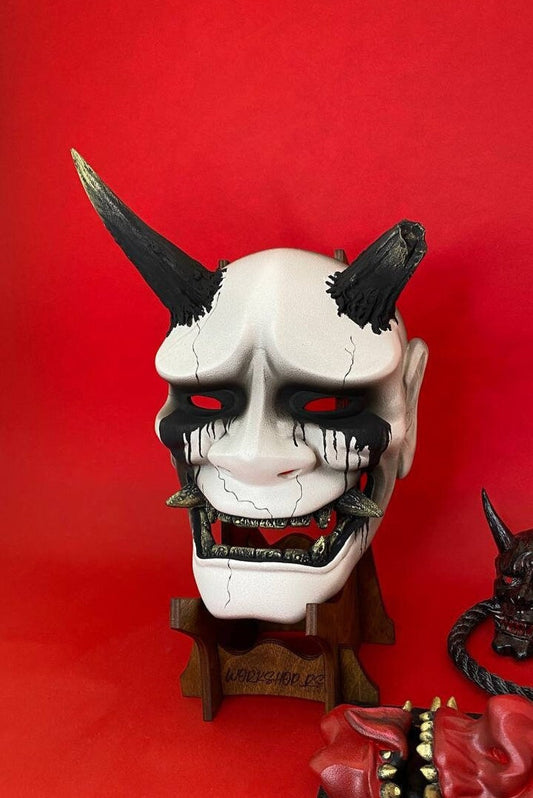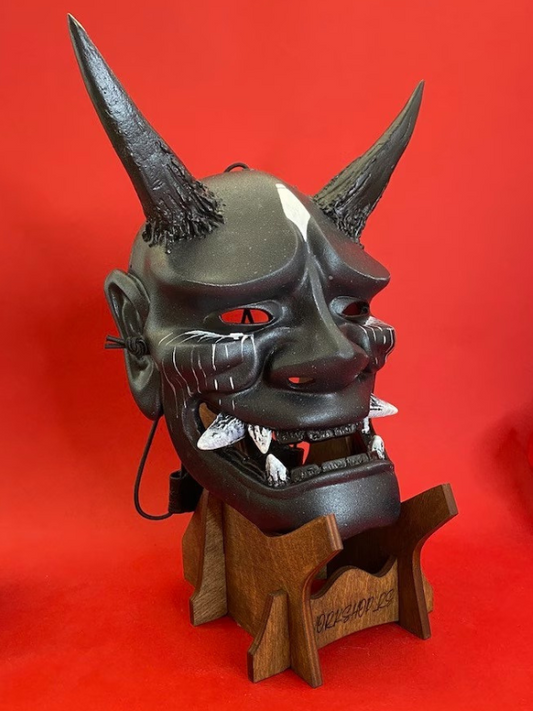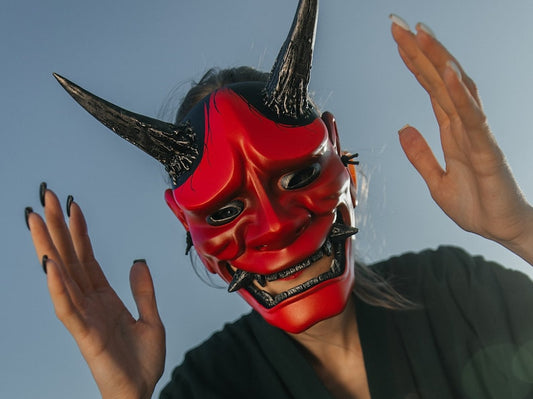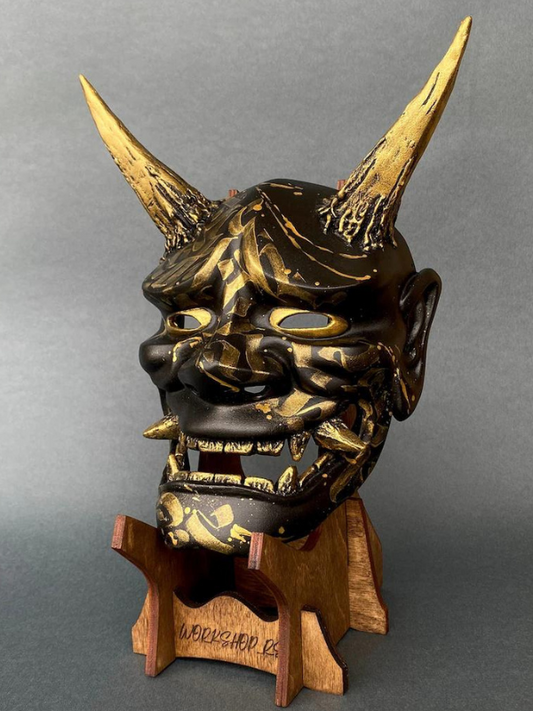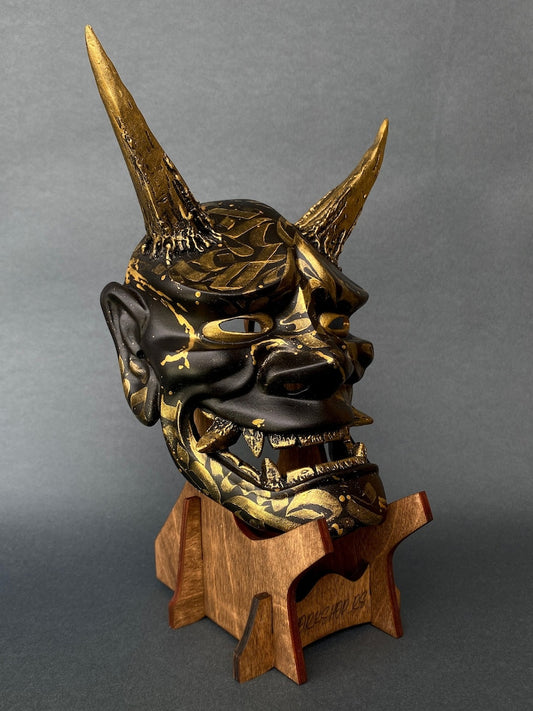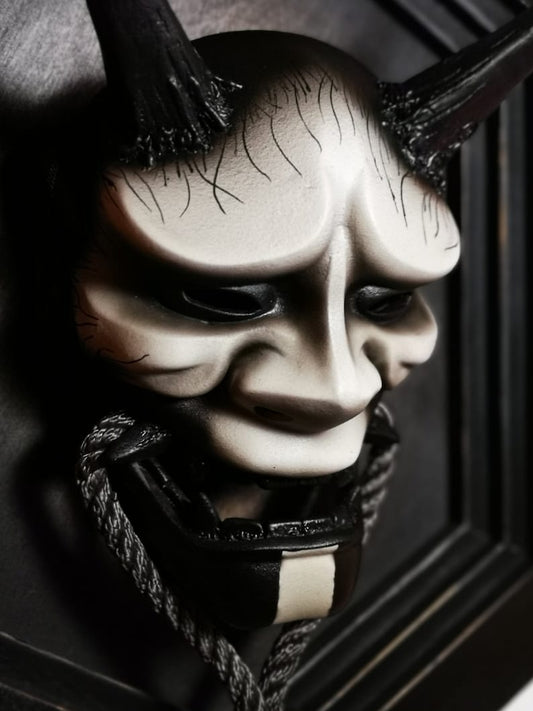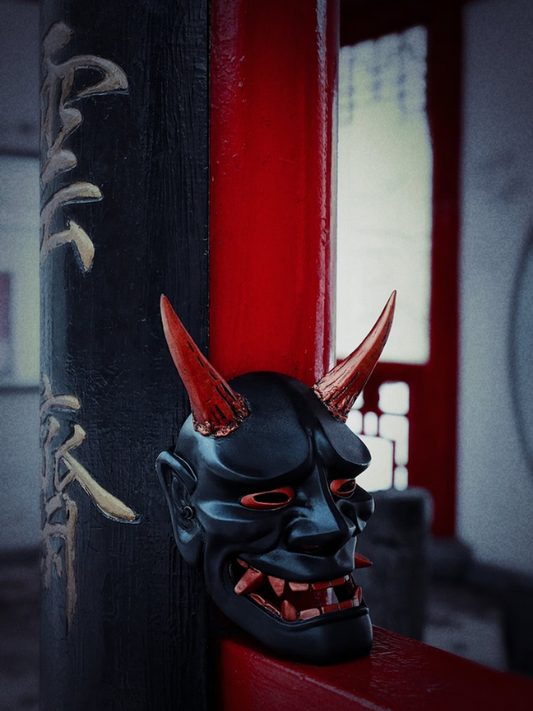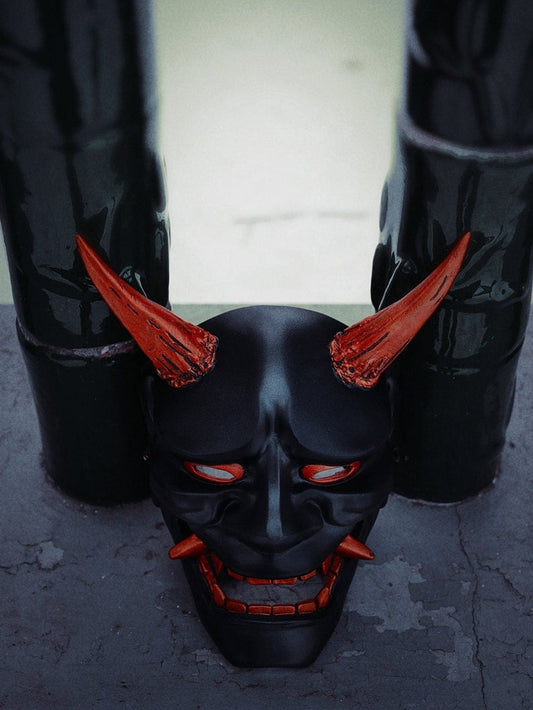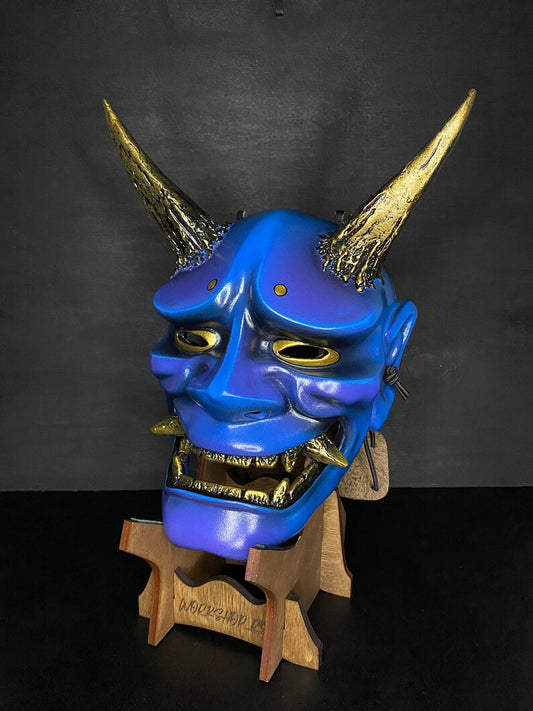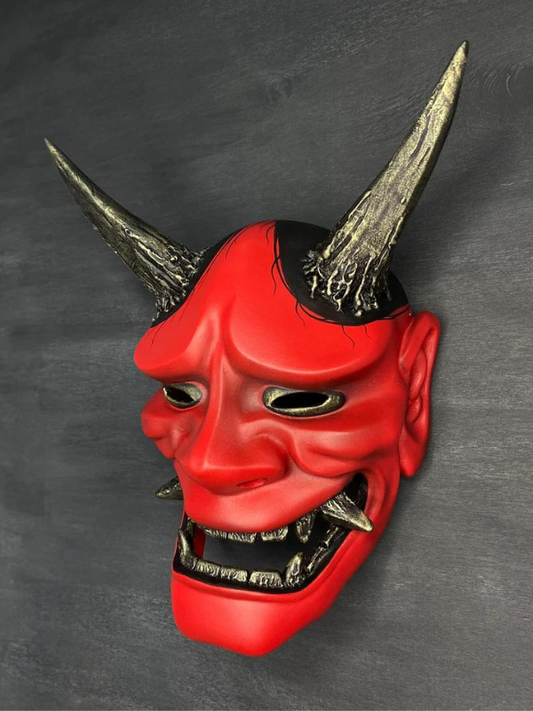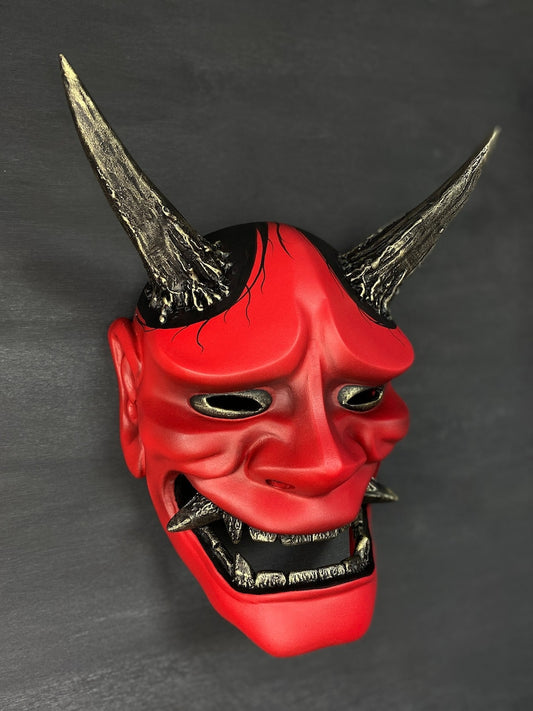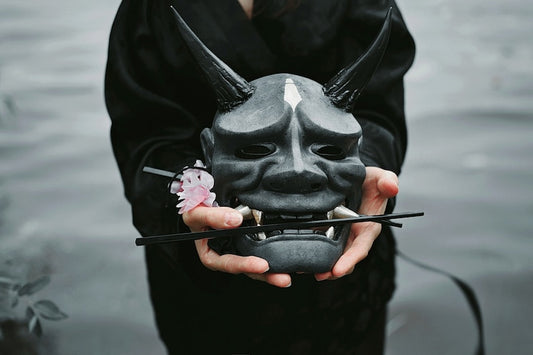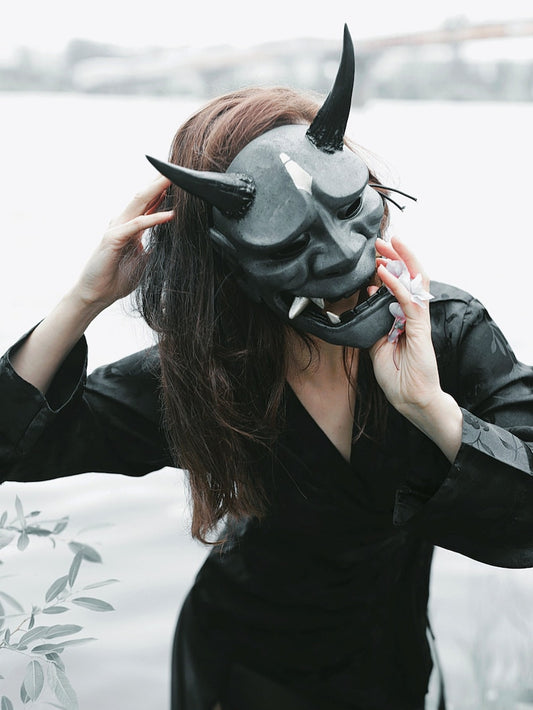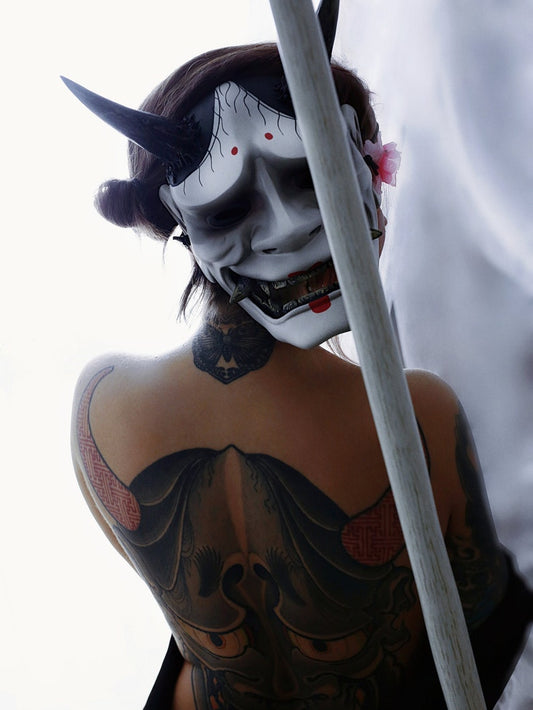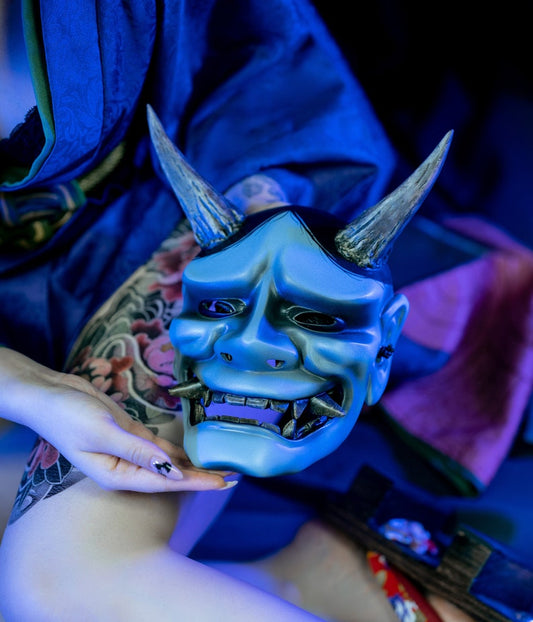Hannya Masks: The Symbol of Passion and Artistic Expression
Hannya masks are one of the most iconic and captivating symbols in Japanese culture, embodying the complex emotions of jealousy, anguish, and wrath. Originating from Noh theater, these masks have transcended the stage to become a staple in Japanese art and tradition.
Steeped in folklore, Buddhism, and theatrical tradition, these masks represent a woman transformed into a demon by intense passion and jealousy, playing a significant role in various cultural and theatrical practices.
Origins and History of Hannya Masks
In Japanese folklore and Buddhist tradition, the term "Hannya" refers to a once human female who has become a demon due to overwhelming jealousy or resentment. As such, the Hannya mask is often used in Noh and Kyogen, traditional forms of Japanese theater, to depict a vengeful and tormented female character.
Hannya masks first emerged during the 14th century in the context of Noh theater, Japan's oldest and most revered theatrical art form. Noh plays often focus on themes of love, jealousy, and betrayal, with the Hannya mask serving as a powerful symbol of the tormented female demon. The name "Hannya" is derived from the Japanese word for "wisdom," reflecting the mask's origins in Buddhist teachings.
Design and Meaning of the Hannya Mask
The striking design of Hannya masks is characterized by a combination of human and demonic features, including sharp horns, a gaping mouth with fangs, and bulging eyes. These elements serve to convey the character's transformation from a human woman into a vengeful demon, driven by intense emotions and an insatiable desire for revenge.
Hannya masks are traditionally handcrafted by skilled artisans using materials such as wood, clay, or paper. The process begins with carving the basic shape of the mask, followed by the addition of intricate details, such as the horns, facial features, and expression. The masks are then painted, typically in shades of red or white, with the color reflecting the character's social status and emotional intensity.
The colors of the Hannya mask carry significant meaning. A mask with a pale, almost white, hue signifies a woman of noble or aristocratic status, while a reddish-colored mask signifies a low-class woman. The darkest masks, often deep red or even black, symbolize true demons or oni, the most fearsome and malevolent of creatures.
Despite their terrifying appearance, Hannya masks are deeply tragic. The mask's design allows for an array of expressions depending on the angle at which it's viewed. From the front, the mask appears angry and menacing, but when tilted downwards, the face of the mask appears sorrowful, reflecting the sorrow and regret beneath the rage.
The Hannya mask's expression is a key component of its symbolism, with the mask appearing sorrowful when viewed from certain angles and fiercely angry from others. This duality reflects the complexity of human emotions and the fine line between love and hate, a central theme in many Noh plays.
In modern times, the Hannya mask has permeated various aspects of art and fashion. It has become a popular motif in tattoo artistry, often symbolizing the overcoming of jealousy or adversity. The masks are also used as decorative pieces, serving as a reminder of the rich cultural history and artistic traditions of Japan.
Roles and Significance in Japanese Culture
- Noh Theater: Hannya masks play a crucial role in Noh theater, with actors donning the masks to portray characters such as vengeful spirits, betrayed lovers, or tormented women. The masks' nuanced expressions and symbolism allow the performers to convey a wide range of emotions without the need for dialogue or exaggerated gestures.
- Kyogen Theater: In addition to Noh, Hannya masks also appear in Kyogen theater, a comedic counterpart to Noh. In Kyogen performances, the masks are used to depict humorous or absurd situations, often involving supernatural beings or exaggerated emotions.
- Art and Crafts: The intricate design and cultural significance of Hannya masks have made them a popular subject in Japanese art, with artists creating paintings, woodblock prints, and sculptures featuring the iconic masks. Hannya masks are also a popular motif in traditional Japanese tattoo art, symbolizing strength, protection, or the overcoming of personal demons.
- Popular Culture: In modern Japan, Hannya masks continue to captivate audiences, with their imagery appearing in manga, anime, and film. The masks have also become a popular accessory in fashion and cosplay, with enthusiasts donning the masks to evoke a sense of mystery, intrigue, or to pay homage to Japanese tradition.
Hannya masks are a powerful symbol of the complexity of human emotions and the transformative power of love, jealousy, and betrayal. Through their history in Noh theater, their influence on art, and their continued presence in popular culture, Hannya masks serve as a testament to the enduring appeal and cultural significance of this captivating icon. As we continue to explore and appreciate the rich heritage of Japanese culture, the Hannya mask remains a poignant reminder of the artistry,
hether used in dramatic performances, body art, or as a decorative piece, the Hannya mask continues to captivate and intrigue with its complex narrative and artistic expression.

